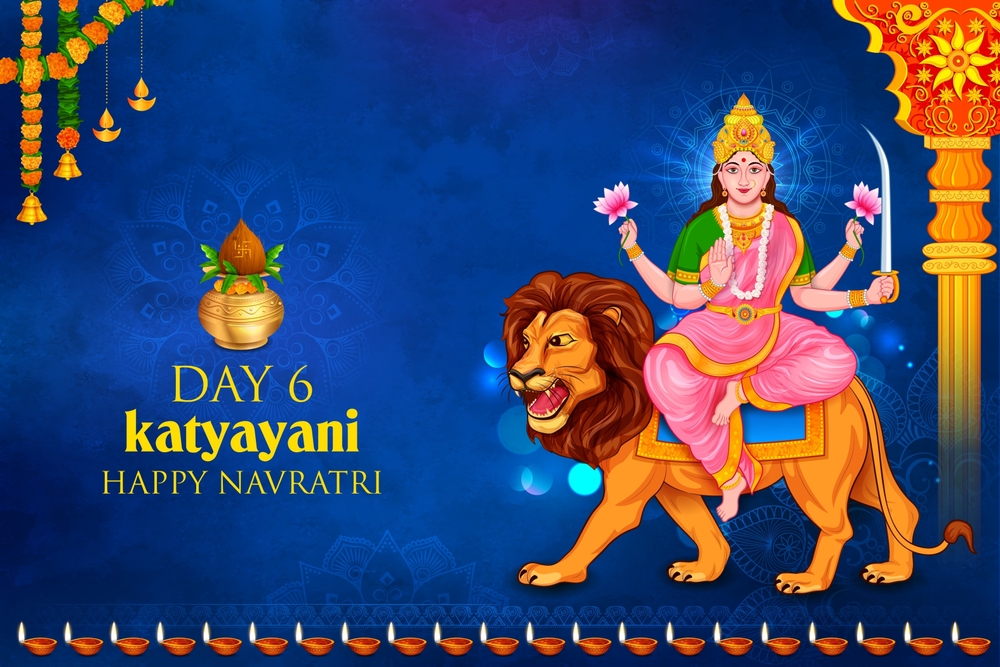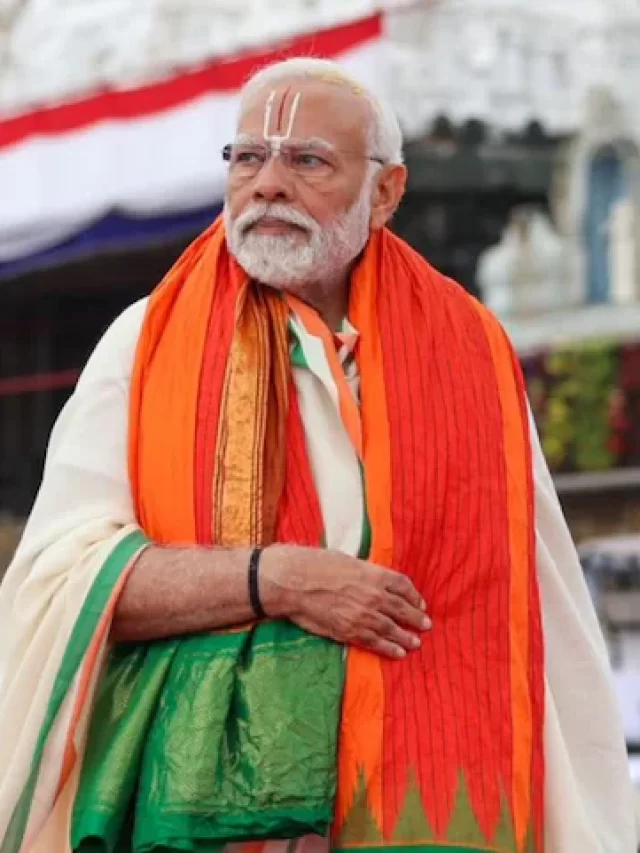Katyayani Mata, the sixth form of Goddess Durga, stands as a beacon of strength, courage, and divine protection. Maa Katyayani The 6 Day Form Of Goddess Durga story of vanquishing the demon Mahishasura symbolizes the triumph of good over evil and continues to inspire devotees to fight against injustice and negativity in their lives. Through her worship during Festivals In Navaratri Puja and other regional observances, devotees seek her blessings for courage, wisdom, and victory in all aspects of life.
As the goddess who grants both marital harmony and spiritual strength, Katyayani Mata holds a unique place in the hearts of her devotees. Her fierce yet motherly nature encapsulates the balance between power and compassion, making her a source of inspiration for those seeking strength in both worldly and spiritual pursuits.
Katyayani Mata is the sixth form of Navadurga, the nine manifestations of Goddess Durga, and she holds a special place in Hindu mythology as a symbol of immense strength, valor, and divine justice. Known as the warrior goddess, Katyayani is the powerful protector of the righteous and the destroyer of evil. Google worship is particularly significant during the Navaratri festival, especially on the sixth day, when devotees seek her blessings for courage, protection, and victory over adversities.
This article explores the mythology, symbolism, and spiritual significance of Katyayani Mata, along with the various festivals and rituals associated with Maa Katyayani The 6 Day Form Of Goddess Durga worship.
Katyayani Mata

The story of Katyayani Mata is rooted in Hindu mythology and is closely associated with the demon Mahishasura, who was terrorizing the universe. Mahishasura was a powerful demon with a boon that made him nearly invincible—no man or god could defeat him. As his reign of terror grew, the gods, unable to vanquish him, sought help from the supreme feminine energy, Shakti.
To defeat Mahishasura, the divine trinity of Brahma, Vishnu, and Shiva united their energies to create a goddess with unmatched power. This divine force took the form of Katyayani, named after the great sage Katyayana, who was said to have performed rigorous penance to invoke the goddess.
It is believed that Katyayani was born to him as a reward for his devotion, and thus, she was called Katyayani.
Armed with the combined weapons and blessings of the gods, Katyayani set out to confront Mahishasura. After a fierce battle, she finally killed the demon, restoring peace and balance to the universe. This victory of Goddess Katyayani over Mahishasura is celebrated as the ultimate triumph of good over evil.
Iconography and Symbolism of Katyayani
Katyayani is often depicted as a fierce and radiant goddess, embodying power and divine justice. She is typically portrayed with four or ten arms, depending on the artistic interpretation, each holding different weapons like a sword, trident, lotus, and shield. In two of her hands, she displays Abhaya Mudra and Varada Mudra, which signify protection and blessings to her devotees.
Katyayani rides a lion, symbolizing her courage and fearlessness in the face of evil. The lion is a representation of strength, royalty, and power, and riding it shows that she has complete control over these attributes. Her lotus flower symbolizes purity, wisdom, and spiritual awakening, while her weapons reflect her readiness to combat injustice and destroy evil forces.
The Spiritual Significance of Katyayani Worship
Katyayani Mata is worshipped primarily for strength, courage, and the ability to overcome challenges. She is a fierce protector, and her blessings are invoked by those seeking to rid themselves of fear, negativity, and obstacles. Her worship also holds special significance for young unmarried women, as Katyayani is believed to bestow them with Maa Katyayani The 6 Day Form Of Goddess Durga the boon of a good husband.
In the Bhagavata Purana, it is mentioned that the gopis (young women) of Vrindavan worshipped Katyayani to get Lord Krishna as their husband. Thus, she is revered as a goddess who grants marital harmony and happiness, and young girls still observe the Katyayani Vrata (a special fast) to invoke her blessings for finding a suitable life partner.
Spiritually, Katyayani represents the cosmic force of transformation and destruction of evil. She embodies the divine feminine energy that fights against ignorance, injustice, and ego, helping devotees find clarity and moral strength. By worshipping her, devotees are believed to gain the inner power to face life’s difficulties with resilience and righteousness.
Festivals and Rituals Dedicated to Katyayani
Katyayani Mata is primarily worshipped on the sixth day of Navaratri, a festival dedicated to the nine forms of Goddess Durga. Navaratri, meaning “nine nights,” is a major Hindu festival celebrated with immense devotion across India and the world. Each day of Navaratri is dedicated to one of the nine forms of Durga, and on the sixth day, Katyayani is worshipped for her power and grace.
1. Navaratri Celebrations
During Navaratri, devotees worship Katyayani with rituals that include lighting lamps, offering flowers, and reciting hymns and mantras. Special pujas are performed in temples dedicated to the goddess, where her idol is adorned with beautiful garments and jewelry. Devotees offer fruits, sweets, and coconuts, as these are believed to please the goddess.
Fasting is a common practice during Navaratri, and devotees often follow strict dietary restrictions to purify the body and mind. On the sixth day, those seeking courage, protection, and success in their endeavors invoke Katyayani’s blessings with Maa Katyayani The 6 Day Form Of Goddess Durga fervent prayers. Women, especially unmarried girls, worship Katyayani to seek her blessings for marital happiness.
2. Katyayani Vrata
Katyayani Vrata is a special ritual observed by young unmarried girls to seek the blessings of the goddess for a suitable and virtuous husband. It is believed that by observing this vrata (fast), they can secure the goddess’s favor and receive her blessings for a harmonious married life. The vrata typically involves fasting, praying, and chanting mantras dedicated to the goddess. It is observed for a specific period, often in the month of Margashirsha (November-December).
The significance of this vrata comes from the story of the Gopis of Vrindavan, who performed this penance to attain Lord Krishna as their husband. Thus, Katyayani is also regarded as the goddess of love and marriage, and many women pray to her for a happy and prosperous marital life.
3. Durga Puja and Other Regional Festivals
In regions like West Bengal, Assam, and Odisha, Durga Puja is celebrated with Maa Katyayani The 6 Day Form Of Goddess Durga grandeur, and on the sixth day, Katyayani Mata is especially venerated. Huge idols of the goddess are installed in pandals, and elaborate rituals and cultural programs are held. Devotees gather in large numbers to offer prayers, perform traditional dances, and celebrate the goddess’s divine energy.
In southern India, particularly Tamil Nadu, devotees celebrate Skanda Sashti, a festival dedicated to Lord Skanda (Kartikeya), the son of Katyayani Mata. Though primarily focused on Skanda, this festival also honors Katyayani for her role as the divine mother who nurtured and empowered her son to defeat evil forces.
Katyayani Mata and the Modern Devotee
The worship of Katyayani Mata holds significant relevance in the modern world, where individuals face numerous challenges, both external and internal. As a symbol of courage and divine justice, she inspires people to face adversity with strength and conviction. Whether it is overcoming personal fears, battling injustice, or navigating complex relationships, Katyayani’s blessings are believed to provide the fortitude needed to succeed.
For women, especially, Katyayani represents the balance between strength and compassion, embodying the dual roles of protector and nurturer. In a world that constantly demands resilience and power, her worship serves as a reminder that these qualities are inherently present within each individual.



